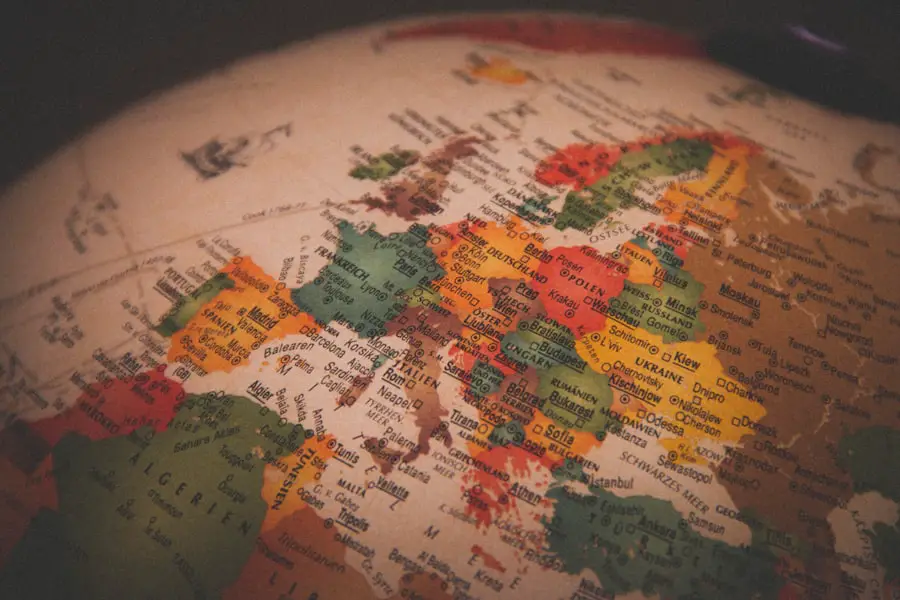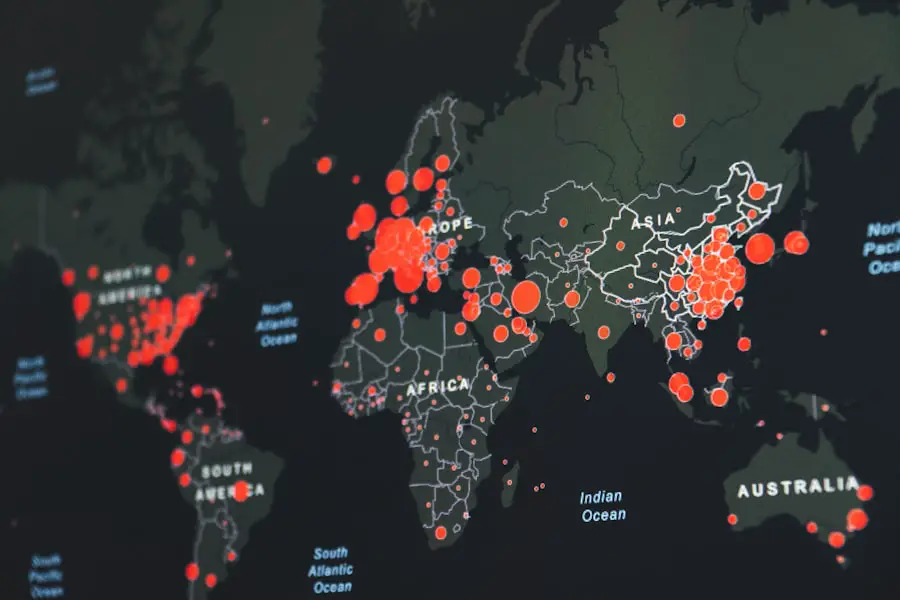In today’s digital age, understanding your data usage is crucial, especially when traveling. Data usage refers to the amount of data consumed by your devices while accessing the internet, whether through browsing, streaming, or using applications. Each activity on your smartphone or tablet consumes a different amount of data.
For instance, streaming a high-definition video can use up to 3 GB of data per hour, while browsing social media might only consume a few megabytes per minute. This disparity highlights the importance of being aware of how your activities translate into data consumption. Moreover, many mobile devices come equipped with built-in tools that allow users to monitor their data usage.
These tools can provide insights into which applications are consuming the most data and help users set limits or alerts to avoid exceeding their data caps. Understanding these metrics is essential for travelers who may not have access to unlimited data plans abroad. By keeping track of your data usage, you can make informed decisions about how to connect to the internet while on the go, ensuring that you stay within your budget and avoid unexpected charges.
Key Takeaways
- Understanding your data usage is crucial for managing your expenses and avoiding overage charges while traveling.
- Factors affecting data usage while traveling include streaming, social media usage, and app updates, among others.
- Calculating your data needs for travel involves considering your typical usage habits and the activities you plan to do while abroad.
- Choosing the right data plan for international travel requires comparing options, considering coverage, and understanding any limitations or restrictions.
- Tips for minimizing data usage while traveling include using Wi-Fi whenever possible, turning off automatic updates, and using data-saving features on your devices.
Factors Affecting Data Usage While Traveling
Several factors can significantly influence your data usage while traveling. One of the most prominent is the type of activities you engage in during your trip. For example, if you plan to use navigation apps frequently, such as Google Maps or Waze, you may find that these applications consume a considerable amount of data, especially if you are using them for extended periods.
Additionally, social media platforms like Instagram and Facebook can also be data-intensive due to the images and videos that populate your feeds. Another critical factor is the availability and quality of Wi-Fi networks in your travel destination. In some regions, public Wi-Fi may be abundant and reliable, allowing you to connect without using your mobile data.
Conversely, in areas with limited connectivity or poor network quality, you may find yourself relying more heavily on your mobile data plan. Furthermore, the settings on your device can also impact data usage; for instance, enabling automatic updates for apps or allowing background data usage can lead to unexpected consumption.
Calculating Your Data Needs for Travel

Calculating your data needs for travel involves assessing both your planned activities and the duration of your trip. Start by estimating how much data each activity will consume. For example, if you plan to stream music for two hours a day during a week-long trip, you might use around 1 GB of data just for that activity alone.
Similarly, if you intend to upload photos or videos to social media, consider how many you plan to share and their file sizes. To create a more comprehensive estimate, consider using a data calculator tool available online. These tools allow you to input various activities and their expected durations to provide a rough estimate of total data consumption.
Additionally, it’s wise to factor in some buffer data for unforeseen circumstances, such as needing to access information or maps unexpectedly. By calculating your data needs ahead of time, you can make more informed decisions about which data plan will best suit your travel requirements.
Choosing the Right Data Plan for International Travel
| Data Plan | Cost | Data Limit | Validity |
|---|---|---|---|
| Basic Plan | 25 | 500MB | 7 days |
| Standard Plan | 40 | 1GB | 14 days |
| Premium Plan | 60 | 2GB | 30 days |
Selecting the right data plan for international travel can be daunting given the myriad options available. One approach is to check with your current mobile provider to see if they offer international roaming packages. Many carriers provide short-term plans that allow you to use your existing phone number and plan while abroad, often at a reduced rate compared to standard roaming fees.
This option can be convenient as it allows you to maintain continuity in communication without needing to switch SIM cards. Alternatively, travelers may consider purchasing a local SIM card upon arrival at their destination. This option often provides more affordable rates for local data usage and can be particularly beneficial if you plan to stay in one country for an extended period.
However, it’s essential to ensure that your phone is unlocked and compatible with local networks before opting for this route. Additionally, some travelers may find it advantageous to explore international data plans offered by specialized providers that cater specifically to travelers, offering competitive rates and flexible options.
Tips for Minimizing Data Usage While Traveling
Minimizing data usage while traveling is essential for avoiding unexpected charges and ensuring that you stay connected without breaking the bank. One effective strategy is to download content before your trip. For instance, if you enjoy listening to podcasts or music, consider downloading episodes or playlists while connected to Wi-Fi at home.
This way, you can enjoy your favorite content without using mobile data during your travels. Another practical tip is to adjust the settings on your device to limit background data usage. Many smartphones allow users to restrict background app activity when not connected to Wi-Fi.
By enabling this feature, you can prevent apps from consuming data without your knowledge while you’re busy exploring new destinations. Additionally, consider using offline maps for navigation; many mapping applications offer offline functionality that allows you to download specific areas ahead of time, saving both time and data while on the road.
Alternatives to Traditional Data Plans for Travel

For travelers seeking alternatives to traditional data plans, several options are available that can provide flexibility and cost savings. One popular choice is mobile hotspot devices or pocket Wi-Fi routers that allow multiple devices to connect to the internet through a single connection. These devices can be rented or purchased and often come with various data plans tailored for travelers.
This option is particularly useful for families or groups traveling together who need multiple devices connected simultaneously. Another alternative is utilizing global SIM cards that offer coverage in multiple countries without the need for switching SIMs at each destination. These cards often come preloaded with a certain amount of data and can be recharged as needed.
They provide a convenient solution for frequent travelers who visit various countries and want a seamless internet experience without worrying about local SIM compatibility.
Data Roaming and Its Impact on Your Data Usage
Data roaming refers to the ability of a mobile device to access the internet while outside its home network’s coverage area. While this feature allows travelers to stay connected abroad, it can also lead to significant costs if not managed carefully. Roaming charges vary widely depending on the carrier and destination; some providers may charge exorbitant fees per megabyte used, leading to unexpectedly high bills upon returning home.
To mitigate the impact of data roaming on your budget, it’s essential to understand your provider’s roaming policies before traveling. Some carriers offer daily or weekly roaming packages that provide a set amount of data at a flat rate, which can be more economical than pay-per-use rates. Additionally, travelers should be cautious about automatic updates and app settings that may consume data without their knowledge while roaming.
Monitoring and Managing Your Data Usage While Traveling
Monitoring and managing your data usage while traveling is vital for staying within budget and avoiding overage charges. Many smartphones come equipped with built-in tools that allow users to track their data consumption in real-time. By regularly checking these metrics throughout your trip, you can adjust your usage habits as needed—whether that means limiting streaming services or opting for Wi-Fi whenever possible.
In addition to built-in tools, various third-party applications are available that provide more detailed insights into data usage patterns. These apps can help identify which applications are consuming the most data and offer suggestions for optimizing usage based on individual habits. Setting alerts or limits within these apps can also serve as a helpful reminder when approaching your data cap, ensuring that you remain mindful of your consumption throughout your travels.
When planning for travel, it’s important to consider how much data you’ll need to stay connected while on the go. According to a recent article on TakeTravelInfo, having a portable white noise machine can help you get a good night’s sleep in noisy environments. This can be especially useful when trying to conserve data by avoiding late-night video streaming. Additionally, a carry-on suitcase with a built-in USB charger can keep your devices powered up without draining your data with constant searching for outlets. And don’t forget to pack one of the best travel pillows for long flights to ensure you arrive at your destination well-rested and ready to explore.
FAQs
What factors should I consider when determining how many gigs of data I need for travel?
Factors to consider include the length of your trip, the number of devices you’ll be using, the type of activities you’ll be doing, and the amount of data each activity requires.
How can I estimate how much data I’ll need for travel?
You can estimate your data needs by considering the average data usage for activities such as browsing the internet, using social media, streaming music or videos, and using maps or navigation apps.
What are some tips for managing data usage while traveling?
Some tips for managing data usage while traveling include using Wi-Fi whenever possible, downloading maps and entertainment content for offline use, and adjusting your device settings to minimize data usage.
What are some common data packages offered by mobile carriers for international travel?
Common data packages for international travel include daily or weekly data passes, monthly international plans, and pay-as-you-go options. It’s important to research and compare these options before traveling.
What are the potential consequences of not having enough data while traveling?
Potential consequences of not having enough data while traveling include being unable to access important information, getting lost without navigation assistance, and missing out on communication with friends and family.
